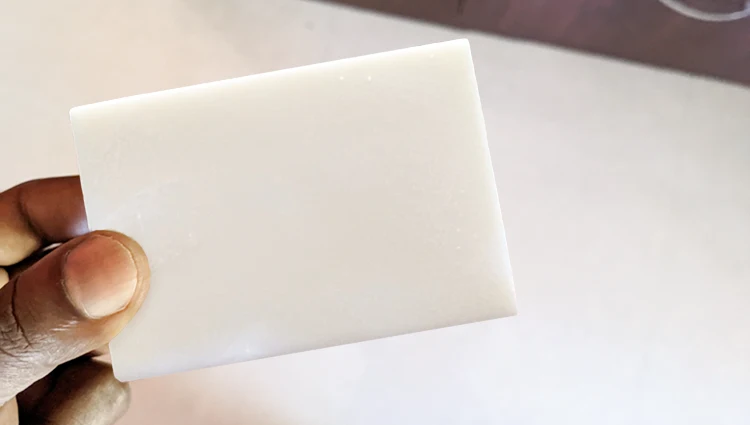Tallow soap has an extensive history, stitched together by its unique properties, economical benefits, and sustainability factors. In modern times, this soap variant is claimed by some to deliver a host of skin benefits, but it often raises an eyebrow in the dermatology community. Let’s take a deeper dive into understanding what tallow soap is, its purported benefits, and the scientific verdict surrounding its use as a skin product.

What is Tallow Soap?
Tallow is a type of white fat that is present around the internal organs and beneath the skin of animals. It is typically prepared from the suet and body fats of cows, acquired through the meat processing industry. Arguably turning waste material into a useful commodity offers substantial economic benefits and can help reduce environmental pollution. Thus, tallow soap is immensely beneficial from a sustainability perspective.
Production Process
The process of producing tallow soap involves a few specific steps. First off, the collected tallow is rendered by boiling it with distilled water. This process purifies tallow from impurities, leaving a cleaner, purer form of fat. The more refined fat then solidifies at the top while impurities collect at the bottom of the pot. This purified fat, or tallow, is later mixed with sodium hydroxide or lye. The resultant product, through a process called saponification, is sodium tallowate — the primary component of tallow soap.
The Soap’s Characteristic Features
Tallow soap has characteristic features that set it apart from other soap categories. Typically, it showcases fewer chemical content compared to its counterparts, aligning it closer to the ‘hypoallergenic’ soap category. This makes it less likely to cause allergic reactions unless colorants or fragrances are added. A well-made tallow soap emits negligible odor or at most, a mild fatty scent.
Also, tallow soap is highly valued for its cleaning efficacy, foaming capacity, and its compatibility with oils and dirt. The fats within tallow contain essential fatty acids such as palmitoleic, stearic, oleic, myristic, and linoleic acid. These fatty acids are recognized for enhancing skin protection by preventing dryness and helping maintain moisture content. Consequently, tallow soap may function as a natural moisturizer, boosting your skin’s hydration while simultaneously keeping it clean.
Compared to beef tallow, mutton tallow boasts a more impressive nutritional profile, with less palmitic acid and a higher quantity of stearic acid. It has been observed that skin’s mildness improves as tallow content increases, making tallow soaps particularly advantageous for sensitive skin types as it may cause fewer allergic reactions. Moreover, tallow soap is hard and long-lasting, which minimizes waste and potentially contributes to a more sustainable lifestyle.
The Hype and the Reality
Of late, tallow, particularly beef tallow, has been trending in skincare circles. From TikTok users to certain beauty enthusiasts, many seem to promote its efficacy against wrinkles, burns, rashes, and acne. However, it’s crucial to note that dermatologists reiterate the lack of scientific proof supporting these claims. It’s worth reminding that while animal and plant fats have been used as moisturizers for ages, using beef tallow for skincare doesn’t have a firm scientific base.
Fat-soluble vitamins D, E, and K present in beef tallow contribute to collagen manufacturing and skin rejuvenation. Linoleic acid in beef tallow is also recognized for its anti-inflammatory and antioxidant benefits, which can alleviate symptoms of eczema, psoriasis, and rashes. Yet, these characteristics do not necessarily translate into acne correction or wrinkle reduction, as some might claim.
Safe, But With Caveats
Though there are concerns related to the potential transmission of BSE (Bovine Spongiform Encephalopathy) associated with beef tallow, the World Health Organization considers tallow to be a low-risk material. Similarly, the FDA reassures users about the safety of tallow in cosmetics, pointing to the high heat and pressure used during rendering, which should eliminate any risk of BSE transmission. The Cosmetic Ingredient Review (CIR) also categorizes tallow as safe for use in cosmetics.
However, due to challenges tied to tallow’s sourcing, purity, consistency, stability, and preservation, consumers may not know exactly what they’re getting in each batch. This uncertainty leads some dermatologists and researchers to suggest choosing other, proven safe skincare products over unknowns.
The Impact on pH Balance
Healthy skin maintains a pH balance of 5.4 to 5.9, while soaps fashioned from natural fat extracts like tallow usually bear a pH of 9 to 10. If used continuously, this difference might disturb your skin’s natural pH balance leading to decreased oil production and probable dry skin. If you’re suffering from dry skin, it may be prudent to opt for soaps specifically designed for dry skin conditions.
Final Thoughts
Tallow soap is an excellent option when considering sustainability and potential economic benefits. Its hypoallergenic properties and numerous potential skin benefits also make it appealing. However, it’s vital to remain informed about misconceptions around its use as a cure for skin conditions. As always, it’s prudent to consult a dermatologist before integrating new products into your skincare regimen.
